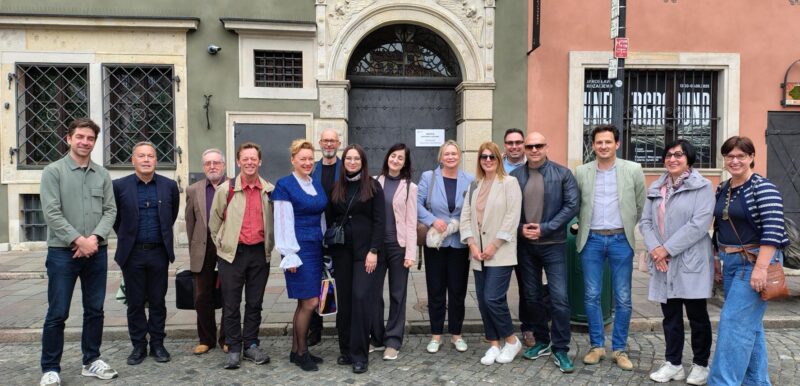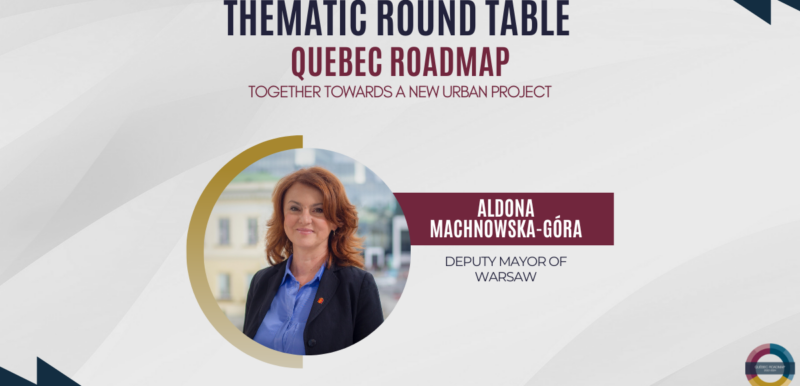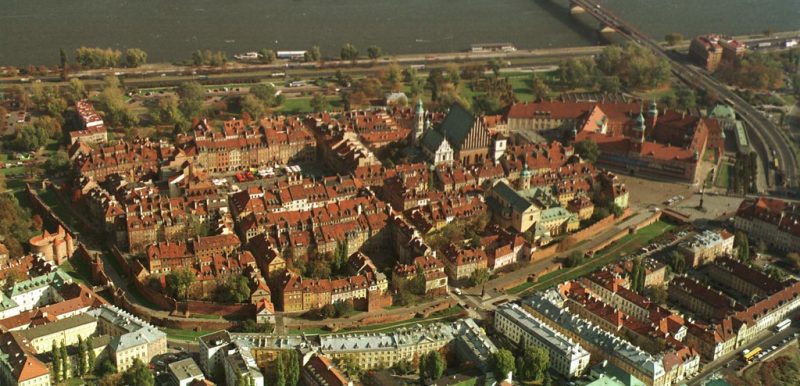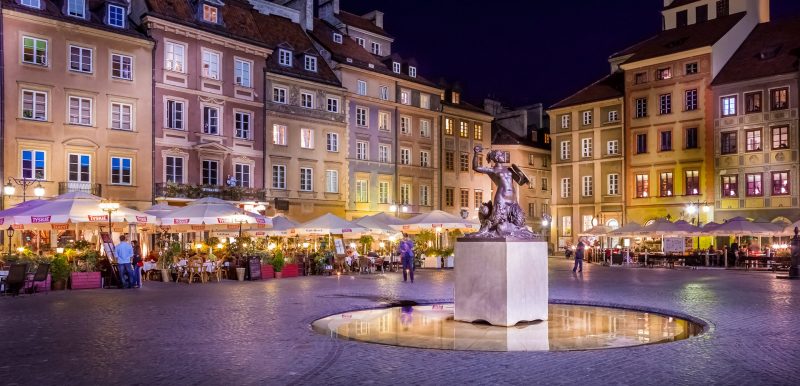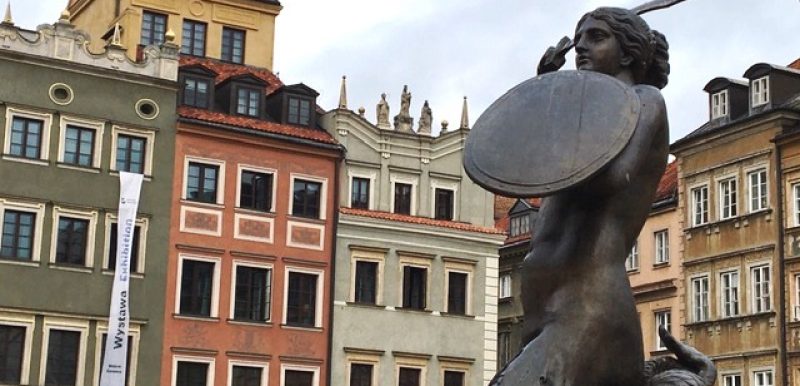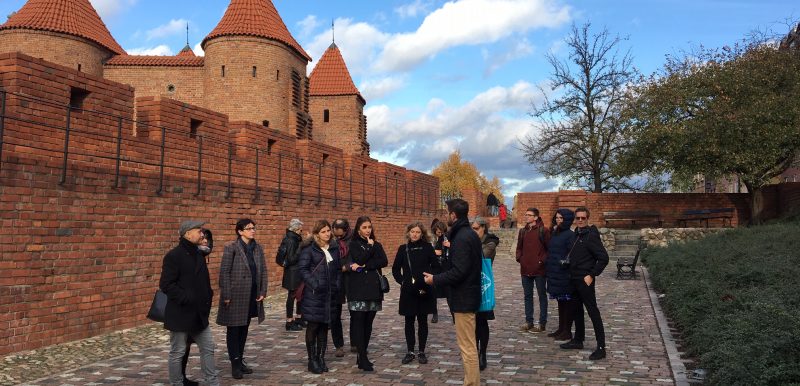Warsaw, Poland
General Information
Administrative status
National capital and chief city of the provincial capital
Historic Centre of Warsaw
Registration Year
1980
Historical function
Politics and administration
Location and site
Warsaw is located in the heart of the North European plains on a well-drained terrace of the Vistula River. Downriver from Kraków, it represents an ideal crossing site.
Urban morphology
The historic centre of Warsaw is located close to the river. It is organised around the market square, known as Rynek Starego Miasta, which is square in form. For the most part, the streets are laid out according to a rectilinear grid. As they extend outwards from the centre, they become wider. The regularity of the plan is gradually dismantled. Large squares open up long perspective views.
The facades of the dwellings, originally constructed between the 16th and the 18th centuries, provide the historic centre of Warsaw with decorative streetscapes. Embellished with frescoes and stone gates, they line the market place. In the vicinity of this square is another row of houses with facades decorated with vaults and stone porches. At the edge of the old city, near the castle, a series of small coloured houses is integrated into the urban fabric. Besides the royal castle (Zamek) overlooking the city, other monuments make up the reconstructed ensemble, bringing together Gothic, Renaissance and Baroque elements. The city is bordered with green space near the castle and along the Vistula River.
Registration criteria
Criterion (ii): The initiation of comprehensive conservation activities on the scale of the entire historic city was a unique European experience and contributed to the verification of conservation doctrines and practices.
Criterion (vi): The Historic Centre of Warsaw is an exceptional example of the comprehensive reconstruction of a city that had been deliberately and totally destroyed. The foundation of the material reconstruction was the inner strength and determination of the nation, which brought about the reconstruction of the heritage on a unique scale in the history of the world.
Historical reference
- Warsaw was founded in 1280 by the dukes of Mazovia. They erected a castle so that they could control passage on the Vistula River; this marked the beginning of the development of Warsaw, which became the capital of the Duchy of Mazovia in 1344.
- In the 15th century, the Dukes established their residence in Warsaw. The city’s political role became more important as its functions multiplied. In 1596, the seat of the King of Poland was transferred from Kraków to Warsaw. A period of prosperity and intense architectural activity followed.
- The city was destroyed by the Swedes and reconstructed twice, in 1656 and in 1702. At the end of the 18th century, it was one of the largest cities in Europe.
- Following the Second World War, during which 85 per cent of Warsaw was destroyed by the Nazi troops, and the insurrection of August 1944, the reconstruction of the city was willfully undertaken. By 1966, all of the monuments of the old city were re-erected according to their appearance between the 14th and 18th centuries.
Photos
News
27 May 2025
Assistance Program in case of Emergencies: results of the Warsaw workshop
Warsaw, Poland
Assistance Program in case of Emergencies
4 September 2020
40 years of the Warsaw Old Town on the UNESCO World Heritage List
Warsaw, Poland
Eastern and Central Europe
14 January 2020
Sharing Heritage through Interpretation
Warsaw, Poland
Northwest Europe and North America
11 November 2019
Training Course on “Heritage Interpretation” in Warsaw
Warsaw, Poland
Northwest Europe and North America
Contact
Mr. Rafal Trzaskowski
Mayor
City of Warsaw
Pl. Bankowy 3/5
Warsaw, Poland
00-950
(+48 22) 443 10 00, 44310 01
[email protected]
Mr. Michal Krasucki
Director of Heritage Protection Department
City of Warsaw
ul. Nowy Świat 18/20, pokój 115
Warsaw, Poland
383
+48 22 4433640/41
[email protected]
Mr. Michal Olszewski
Deputy Mayor of Warsaw
City of Warsaw
pl. Bankowy 3/5
Warsaw, Poland
00-950
+48 22 443 10 17/18
[email protected]



